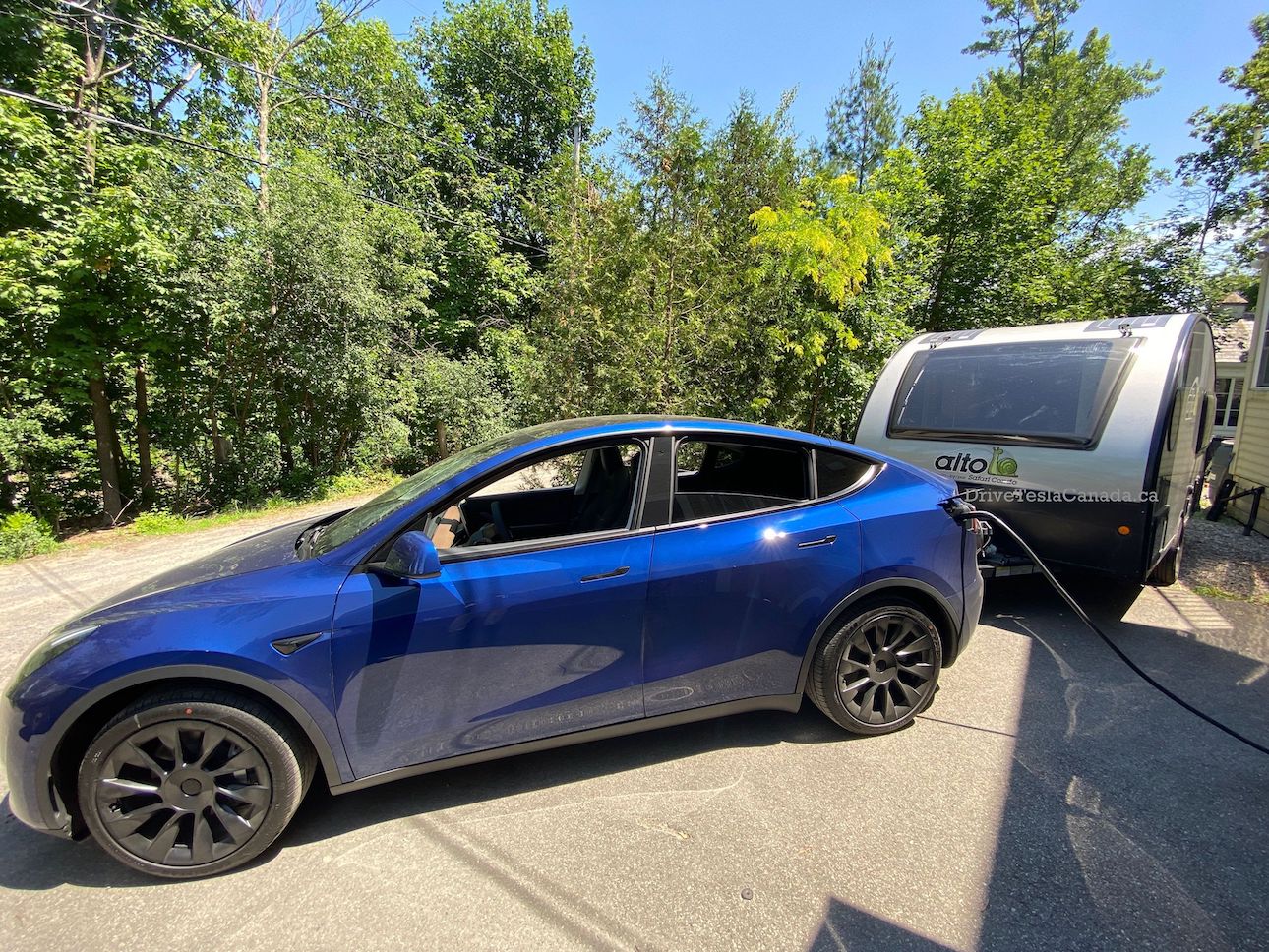Hello All,
Been meaning to post this up for a bit. A week and a half ago made a 400 mile round trip out to Western Kansas. Both days super hot, 102 and 104 with big winds. Especially the return trip high 20's gusting into the 40's. We pull a little teardrop NuCamp Tag trailer, 13 feet long right at 1000 pounds dry. Of course it was to be expected but Wow, did we see some huge consumption. Both out and back we arrived at the Hays Supercharger at 2% SOC. We were trying to pull at about 63 mph on the interstate. I don't like to go much slower than that when the rest of the traffic is running about 80. At 63 our average was in the high 600's kW/mi. We ended up having to take the 2 lane to make it the rest of the way into Hays on the outbound trip. When we arrived home we had averaged 552 over the 397 miles. Almost half of that ended up being 2 lane and a bit more than we'd like to admit at 45 mph.

This isn't our first time out with the camper but with these kind of winds and heat the consumption were really something. Just kinda got our attention. We didn't seem to be the only ones having range issues that day. A few minutes after getting plugged in in Hays on the return trip a Model Y came in on a flatbed having run out of juice. We had friends returning from eastern Kansas that same day. They told us about passing a Tesla going real slow on the interstate shoulder with its 4 ways on a few miles east of the Salina Supercharger.
I guess the main reason I'm posting. We thought we had figured it out from our previous times pulling the camper. How fast we could go, what our consumption would be, what kind of buffer we could be comfortable with. These kinds of wind and temps really effected things. On the other hand we didn't get towed in.

We watched our remaining miles to destination and our remaining miles in the battery and adjusted. We looked at Plugshare and found other slower charging options if needed and did take advantage of one. We adjusted how we drove and were we drove to make it in.
Not a trip I'm looking to repeat but helped us build our confidence a bit as we have a much more ambitious trip planned starting next month.




